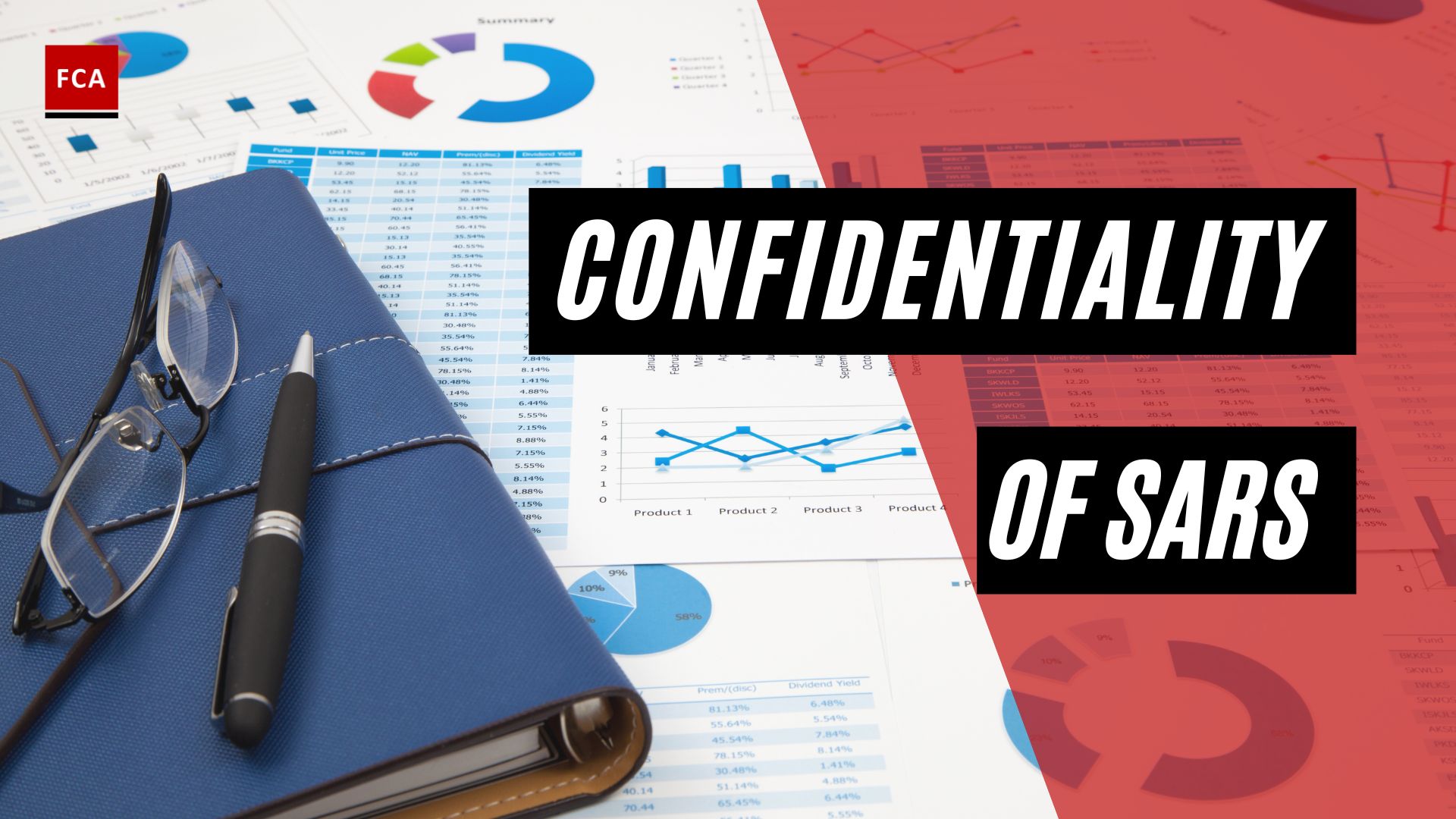AML Compliance Solutions: Strengthening Financial Institutions
Ensuring compliance with Anti-Money Laundering (AML) regulations is of utmost importance for financial institutions. A robust AML compliance program helps protect against financial crimes such as money laundering and terrorist financing. In this section, we will explore the importance of AML compliance, high-risk industries for money laundering and terrorist financing, characteristics of high-risk customers, and the role of technology in streamlining AML workflows.
The Importance of AML Compliance
AML compliance is vital for financial institutions to maintain the integrity of their operations and protect against illicit financial activities. Failure to comply with AML regulations can result in significant financial penalties and reputational damage (CBIZ). A robust AML compliance program helps mitigate risks and protect the institution’s reputation by screening clients, monitoring transactions, and reporting suspicious activities to regulatory authorities.
High-Risk Industries for Money Laundering and Terrorist Financing
Certain industries are considered high-risk for money laundering and terrorist financing due to the nature of their transactions and customers. These include financial institutions such as banks, currency exchange houses, and payment processing companies. Additionally, businesses involved in real estate, cars, boats, or operating in high-risk countries contribute to a higher risk of financial crimes (sanctions.io). It is crucial for financial institutions operating in these industries to implement robust AML compliance solutions to mitigate the associated risks.
Characteristics of High-Risk Customers
Identifying high-risk customers is an essential aspect of AML compliance. High-risk customers may exhibit certain characteristics that increase the likelihood of involvement in money laundering or terrorist financing activities. These characteristics include customers who are politically exposed persons (PEPs), reluctant to provide information, primarily pay with cash, have unclear sources of funds, exhibit unusual behaviors, have criminal histories, or are linked to terrorist organizations. Financial institutions must have effective AML compliance solutions in place to identify and manage these high-risk customers.
Technology’s Role in Streamlining AML Workflows
Technology plays a crucial role in streamlining AML workflows and enhancing the efficiency of compliance processes. AML compliance solutions leverage advanced technologies to automate risk management processes, making it easier for financial institutions to monitor customer information and detect abnormal transactions (Unit21). These solutions help verify customers, flag suspicious transactions and behavior, screen sanctions and politically exposed persons (PEP) lists, and mitigate false positives faster and more effectively than manual processes. By integrating technology into AML workflows, financial institutions can improve operational efficiency and enhance their ability to combat financial crimes.
By recognizing the importance of AML compliance, understanding high-risk industries and customers, and harnessing the power of technology, financial institutions can strengthen their AML compliance programs. AML compliance solutions not only help in identifying and preventing financial crimes but also contribute to maintaining trust, reputation, and regulatory compliance within the financial industry.
Implementing Effective AML Compliance Solutions
To combat money laundering and terrorist financing, financial institutions must implement effective AML compliance solutions. These solutions consist of various elements, including a well-rounded AML compliance program, an AML compliance officer, comprehensive training and education, and the use of AML compliance tools.
Elements of an AML Compliance Program
An AML compliance program is a fundamental component of any financial institution’s efforts to combat money laundering and terrorist financing. It should clearly indicate how the organization identifies, mitigates, and manages risks associated with products and services being used for illicit activities. The program should be tailored to the perceived level of risk that the business could potentially face.
Key elements of an effective AML compliance program include:
-
Detecting Suspicious Activities: The program should outline procedures for detecting and reporting suspicious or illegal activities, such as unusual transactions or patterns that may indicate money laundering or terrorist financing.
-
Regular Risk Assessments: Financial institutions should conduct thorough and regular risk assessments to identify potential vulnerabilities and areas of concern. These assessments help in determining the appropriate level of due diligence required for different customers and transactions.
-
Internal Controls: Robust internal controls should be established to ensure compliance with AML regulations. This includes implementing policies, procedures, and systems to prevent and detect money laundering and terrorist financing activities.
-
Training and Education: Adequate training and education should be provided to employees at all levels within the organization. This helps ensure that they have a good understanding of AML procedures, regulations, and compliance requirements (LexisNexis). Employees who work directly with customers, companies, and beneficial owners hold more responsibility for implementing the AML program.
The Role of AML Compliance Officer
An AML compliance officer plays a crucial role in developing, updating, and enforcing compliance programs within a financial institution. They should possess substantial experience and expert knowledge of regulatory data sources, analysis tools, and up-to-date AML regulations to effectively carry out their duties.
The responsibilities of an AML compliance officer may include:
- Overseeing the implementation and maintenance of the AML compliance program.
- Staying up-to-date with the latest AML regulations and industry best practices.
- Conducting risk assessments and ensuring appropriate controls are in place.
- Training employees on AML procedures and requirements.
- Monitoring transactions and unusual activities for potential suspicious behavior.
- Reporting suspicious activities to the appropriate regulatory authorities.
Training and Education for AML Compliance
Training and education are vital components of effective AML compliance solutions. Financial institutions should provide comprehensive training to employees at all levels to ensure they have a good knowledge of AML procedures, regulations, and compliance requirements. This helps individuals understand their roles and responsibilities in preventing money laundering and terrorist financing activities.
Training programs should cover topics such as:
- AML laws and regulations.
- Recognizing red flags and suspicious activities.
- Customer due diligence and know-your-customer (KYC) requirements.
- Reporting obligations and procedures for suspicious activity reporting.
- Emerging trends and typologies in money laundering and terrorist financing.
By equipping employees with the necessary knowledge and skills, financial institutions can enhance their ability to identify and report suspicious activities, thereby strengthening their AML compliance efforts.
Leveraging AML Compliance Tools
AML compliance solutions often involve the use of advanced tools and technology to streamline processes and enhance efficiency. These tools aid financial institutions in verifying customers, flagging suspicious transactions, screening sanctions and politically exposed persons (PEP) lists, and mitigating false positives more effectively than manual processes.
Some common types of AML compliance tools include:
-
Customer Identity Verification: Digital identity verification, biometric identity verification, and electronic identity verification solutions help establish the identity of customers and perform robust KYC checks.
-
Transaction Monitoring Systems: AML transaction monitoring systems analyze large volumes of transactions in real-time, identifying suspicious patterns or anomalies that may indicate illicit activities (aml transaction monitoring).
-
Compliance Management Software: AML compliance software assists in managing and automating various compliance processes, such as customer onboarding, due diligence, and record keeping.
By leveraging these tools, financial institutions can enhance their AML compliance efforts, improve operational efficiency, and ensure compliance with regulatory requirements.
Implementing effective AML compliance solutions is crucial for financial institutions to protect themselves from money laundering and terrorist financing risks. By establishing robust compliance programs, appointing knowledgeable compliance officers, providing comprehensive training, and utilizing appropriate AML compliance tools, organizations can strengthen their AML processes, reduce the risk of financial crime, and maintain regulatory compliance.
Benefits of AML Compliance Solutions
Implementing robust AML compliance solutions offers numerous benefits for financial institutions in their fight against money laundering and terrorist financing. These solutions not only help organizations maintain regulatory compliance but also enhance risk management, operational efficiency, and reputation. Let’s explore some of the key advantages of utilizing AML compliance solutions.
Enhancing Risk Management and Operational Efficiency
By leveraging advanced technologies like artificial intelligence (AI) and machine learning (ML), AML compliance solutions improve risk management capabilities. These solutions enable financial institutions to monitor and analyze large volumes of data in real-time, identifying suspicious activities and potential risks more efficiently. With enhanced monitoring and reporting capabilities, organizations can proactively mitigate the risks associated with money laundering and terrorist financing activities. This, in turn, helps them avoid hefty fines and reputational damage.
Furthermore, AML compliance solutions streamline compliance workflows, automating manual processes and reducing the reliance on time-consuming manual reviews. This results in increased operational efficiency, cost savings, and improved productivity within compliance departments. Organizations can allocate their resources more effectively, focusing on higher-value tasks such as investigating alerts and conducting in-depth due diligence.
Reducing False Positives and Allocating Resources Efficiently
One of the challenges faced by financial institutions in AML compliance is the generation of a high number of false positives. False positives occur when legitimate transactions are flagged as suspicious, leading to unnecessary investigations and resource allocation. AML compliance solutions equipped with advanced technologies help reduce false positives through sophisticated algorithms and intelligent rule engines. These solutions improve the accuracy of transaction monitoring and analysis, minimizing the number of false alerts and enabling organizations to allocate their resources more efficiently.
By reducing false positives, financial institutions can optimize their compliance efforts and focus on investigating genuine risks. This not only saves time and resources but also ensures that compliance teams can effectively identify and respond to suspicious activities without being overwhelmed by a large number of irrelevant alerts.
Quicker Detection of Suspicious Activities
AML compliance solutions equipped with AI and ML capabilities enable financial institutions to detect suspicious activities more quickly. Real-time monitoring and analysis of transactions, combined with intelligent alert generation, allow organizations to identify potential risks in a timely manner. These solutions leverage historical data, patterns, and anomalies to detect unusual transactional behavior, flagging it for further investigation.
The ability to rapidly detect suspicious activities helps financial institutions stay ahead of evolving threats and react promptly to mitigate risks. Early identification of potential money laundering or terrorist financing activities allows organizations to take appropriate actions, such as reporting to regulatory authorities and implementing necessary controls. This proactive approach strengthens the overall effectiveness of an institution’s anti-money laundering efforts.
Building Trust and Maintaining Reputation
The adoption of effective AML compliance solutions is crucial for financial institutions to navigate the complex regulatory landscape and mitigate the risks associated with financial crimes. By demonstrating a strong commitment to compliance, organizations can build trust and confidence among customers, regulators, and other stakeholders. AML compliance solutions help institutions establish a robust compliance framework, ensuring transparency, integrity, and adherence to anti-money laundering regulations.
Maintaining a positive reputation is essential in the financial industry. Effective AML compliance measures contribute to a strong reputation by safeguarding operations, reducing the risk of involvement in illicit activities, and fostering trust in the institution’s compliance program. This, in turn, helps attract and retain customers, build long-term business relationships, and foster a positive image in the marketplace.
In conclusion, implementing robust AML compliance solutions not only enables financial institutions to meet regulatory requirements but also enhances risk management, operational efficiency, and reputation. By leveraging advanced technologies and streamlining compliance workflows, organizations can effectively combat money laundering and terrorist financing activities while building trust and maintaining a positive reputation in the industry.
Technology’s Impact on AML Compliance
As technology continues to advance, it is playing a significant role in revolutionizing AML compliance. Financial institutions are increasingly leveraging advanced technologies such as artificial intelligence (AI), machine learning (ML), and robotic process automation (RPA) to enhance their AML compliance efforts. This section explores the impact of technology on AML compliance, including the challenges of traditional processes and the integration of AI and ML.
Revolutionizing AML Compliance with Advanced Technologies
Technology has the potential to transform AML compliance by enhancing the ability to identify and analyze potential money laundering activities more accurately and quickly. Financial institutions are adopting advanced technologies to improve compliance standards, reduce operational costs and resources, and stay ahead of emerging threats (Source).
Challenges of Traditional AML Processes
Traditional AML processes often rely heavily on manual efforts, which can be time-consuming and resource-intensive. The sheer volume of data involved in AML compliance makes it challenging for human analysts to identify complex patterns and anomalies indicative of potential money laundering activities. Traditional processes may also be prone to human error and can result in delays in the detection of suspicious activities.
Integration of AI and ML in AML Compliance
The integration of AI and ML in AML compliance has emerged as a game-changer. These technologies enable the analysis of large volumes of data at unprecedented speed and accuracy, empowering financial institutions to identify complex patterns and anomalies that may indicate potential money laundering activities. By automating the analysis process, AI and ML reduce the reliance on human resources and significantly shorten the time taken to identify suspicious activities (Source).
Transformation of AML Compliance Processes
Technology has transformed various aspects of AML compliance. Robotic process automation (RPA) automates repetitive tasks and workflows, freeing up valuable human resources for more complex analysis and decision-making. Advanced transaction monitoring systems leverage AI and ML algorithms to enhance the detection of suspicious transactions and minimize false positives. Additionally, technology enables more efficient and accurate customer due diligence (CDD) and know your customer (KYC) processes, including the use of biometric and electronic identity verification methods. Data analytics and big data technologies help financial institutions uncover hidden patterns and trends that may indicate potential money laundering activities. The use of regulatory technology (Regtech) further enhances the agility and responsiveness of AML compliance measures (Source).
As financial institutions continue to embrace technology, AML compliance solutions are evolving to meet the ever-changing landscape of financial crimes. Technology-driven AML compliance solutions offer improved risk assessments, streamlined processes, and enhanced capabilities to identify and combat money laundering and other financial crimes. By harnessing the power of advanced technologies, financial institutions can strengthen their AML compliance programs and contribute to a more secure and resilient financial system.
Choosing the Right AML Compliance Solutions
In the ever-evolving landscape of financial crime, selecting the right AML (Anti-Money Laundering) compliance solutions is crucial for organizations to effectively combat money laundering and meet regulatory requirements. These solutions typically involve a combination of technology, processes, and regulations that help organizations monitor, detect, and report suspicious activities to relevant authorities, ensuring compliance with AML laws (Financial Crime Academy).
Criteria for Selecting AML Software
When choosing AML software, there are several key criteria to consider:
-
Compliance with Regulatory Requirements: Ensure that the software adheres to applicable AML regulations and supports compliance with customer identification program (CIP) and know your customer regulations.
-
Accuracy and Efficiency: Look for software that offers accurate and efficient customer identity verification processes, reducing false positives and minimizing manual review efforts.
-
Data Analytics Capabilities: The software should have robust data analytics capabilities to analyze large volumes of data and identify suspicious patterns and anomalies indicative of potential money laundering activities.
-
Integration and Scalability: Consider software solutions that can seamlessly integrate with existing systems and scale as your organization grows, ensuring a smooth implementation process.
-
User-Friendly Interface: Look for software that provides an intuitive user interface, making it easier for compliance teams to navigate and utilize the system effectively.
Key Features of Effective AML Solutions
Effective AML solutions should possess the following key features:
-
AML Transaction Monitoring: The software should have robust AML transaction monitoring capabilities, allowing organizations to identify and analyze potentially suspicious transactions in real-time.
-
Customer Due Diligence (CDD): Look for solutions that streamline the customer onboarding process and provide comprehensive customer identification program and kyc documentation requirements checks to ensure compliance.
-
Data Integration: The software should be capable of integrating with various data sources, such as public records, watchlists, and digital identity verification providers, for enhanced risk assessment and screening.
-
Advanced Analytics and Reporting: Solutions with advanced analytics capabilities can provide meaningful insights into suspicious activities, generate comprehensive reports, and facilitate regulatory reporting.
-
Automation and Alert Management: Look for software that automates routine compliance tasks, such as data gathering and report generation, and provides efficient alert management workflows to handle potential risks effectively.
AML Compliance Solutions in Practice
In practice, AML compliance solutions have proven to be invaluable for financial institutions in combating money laundering. They enhance risk management and operational efficiency, reduce false positives, and allocate resources efficiently. These solutions enable quicker detection of suspicious activities, allowing organizations to take prompt action and mitigate potential risks. By implementing effective AML compliance solutions, financial institutions can build trust with regulators, customers, and stakeholders, thus maintaining their reputation as responsible actors in the financial industry.
The Future of AML Compliance Technology
The future of AML compliance technology lies in the continued integration of advanced technologies such as artificial intelligence (AI), machine learning (ML), and robotic process automation (RPA). These technologies are revolutionizing AML compliance by enhancing the ability to identify and analyze potential money laundering activities more accurately and quickly. They improve compliance standards, reduce operational costs and resources, and empower financial institutions to stay ahead of emerging threats. As technology continues to evolve, organizations can expect further advancements in AML compliance solutions, providing even more efficient and effective tools to combat financial crime.









